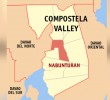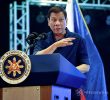[soundcloud url=”https://api.soundcloud.com/tracks/174831692″ params=”auto_play=false&hide_related=false&show_comments=true&show_user=true&show_reposts=false&visual=true” width=”100%” height=”450″ iframe=”true” /]
Marili was a Mindanaoan artist immersed with the condition of martial law regime. Marili started her political consciousness with the students and young people at the Ateneo de Davao University. She emerged active in reaching out to the young who had potentials and interest in theatre. Thus, she found herself in the growth and development of Teatro Atenista where she was linked to the dynamic development of a cultural institution, the Kulturang Atin Foundation, Inc.(KAFI).
KAFI was an equally challenging centre for a cultural movement in Mindanao to emerge among other non-government formations at the height of Marcos rule. With this development, Marili was not just a neophyte in her engagement with the people’s culture but she also demonstrated keenness in education and organizing tasks.
She made herself available for KAFI’s Sining Malay Ensemble (SME). In this particular outreach unit of KAFI, Marili faced the journey to be part of the core volunteers. Consequently, she became a regular staff of KAFI in the furtherance of building a movement for people’s culture.
Every cultural event Marili took part of was a show of contribution to a growing interest in the use of theatre as a tool for education, organization and mobilization of the grassroots for learning, unlearning and re-learning.
While Marili was assuming a critical task in KAFI’s SME, she was able to hone her skills not only in stage performance but in alliance work as well. Importantly, she was a familiar face in BUHILAMAN, KAFI’s mechanism to support community theatre. In creating a pool of grassroots artists, Marili was zealous to reach out to theatre enthusiasts with different persuasions yet she ably handled herself in a way that gained respect and forged solidarity with them.
Her belief and confidence for social transformation made her more credible in pursuing other areas of interest that she believed could help shape the cultural movement. She brought in the specificities of the three peoples of Mindanao: Lumads, Moro and lowland settlers. She relished her link with other cultural formations locally, nationally and globally.
Her marriage to Bonifacio Ilagan, a human rights activist, multi-awarded writer known for his screenplays on social justice themes, came at a time when she took a stand to building bridges for cultural forces. The unifying element was for change and genuine development of the Philippine society through continuing research, education, organizing and networking. She broadened the network supportive of cultural movement for a real change in the country’s landscape.
Social movement was part of her since university life. I could not forget how Marili extended her assistance to the regional programming of Children’s Rehabilitation Center-Southern Mindanao Regional Office where I was at the helm from 1988 until 1994, integrating theatre as a form of therapy for children in war and disasters. Together with Mindanao artists,Mayong Castillo, Ega Bacong, Geejay Bajo, Bert Monterona, Buggy Amplayo, Ariel Perote and Ernie Parts, to name a few, Marili served the network of children’s communities affected by political-armed conflict.
Interestingly, conversations with her over Facebook for this year revealed her earnest desire to see live performances in Davao City. She expressed much enthusiasm in meeting new faces in the cultural movement- with the Davao version of The Vagina Monologues (TVM). She went further to inviting me to mount a script on pains & pleasure of giving birth that she was preoccupied then in the first quarter of this year.
Salute and praise I give to her for a well-spent life in maintaining a network of movers towards developing effective responses to the root causes of Filipino people’s problems. To sum up, may I present, MARILI, as spelled out:
M-Mindanaoan with a strong desire to document liberating practices in the field of arts and culture;
A – rtist, a people’s artist who challenged status quo towards sharing a nationalist perspective;
R – eaffirmist in locating the role and tasks of artists in clarifying the nature of the problems of women and men in Philippine society;
I – nitiative –never stop in creating opportunities for growth and engagement with the grassroots;
L – ife-long learning – continuing immersion and education for alternative lifestyle until her death; and
I – ndigenization – adopt other cultural forms with high regard on the capacity of Filipino people’s culture in advancing the struggle for social transformation.










